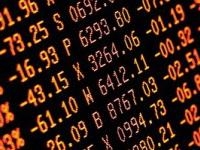
Singapore Markets Morning Briefing - what you need to know for Wed April 11, 2012
The STI is up for a weaker open amidst strong negative sentiment in the US, Europe, and China.
IG Markets Singapore said:
Wall Street suffered its fifth straight day of losses last night as the eurozone debt crisis returned with a vengeance. Add in worries about China’s imports, lack of monetary easing in Japan and cautious comments from Ben Bernanke and it spells for a tough day of trading across Asia.
If traders’ keyboards have a big green button saying "risk on" and a big red one with "risk off" their fingers will be pushing down hard on the red one today.
Among US stock markets, the Dow Jones Industrial Average slumped 1.7% at 12716 while the S&P also dropped 1.7% to finish lower at 1359. This was the S&P’s biggest fall since December 8 and the Dow’s largest drop since November 23.
Much of Europe reopened yesterday after the Easter break and probably wished they hadn’t. The FTSE 100 plummeted 2.2% while the DAX dropped 2.5%.
A sharp rise in Spanish and other peripheral European sovereign debt yields dented investor confidence. Spain’s 10-year yields are trading just below 6%, which isn’t far off the 6.7% peak they hit last November as panic was rife over a eurozone collapse.
The inability of Spain's fiscal austerity measures to alleviate the pressure in the bond market is worrisome, as Economy Minister Luis de Guindos declined to rule out a rescue for the country, and Bank of Spain Governor Mr Ordonez said Spanish lenders may require additional capital if the economy weakens more than expected.
While the focus is very much on Spanish and Italian debt worries, Asia did its bit to darken the mood in the world economy. China revealed in its trade balance that imports slowed sharper than expected with the Bank of Japan held off further monetary easing.
Central bankers also have two big red and green buttons, and the markets don’t like the fact that so many fingers are pushing down on the big red one marked “No QE”.
On the commodity markets, copper dropped to a three-month low, while US oil fell 1.4%. WTI crude is trading at $101.02 while Brent has slipped to $119.98, down 2%.
Energy markets were hit hard by China’s slowing imports, as it is the world’s second biggest crude oil consumer. Further pressure was put on energy and commodity markets by comments from the IMF that prices are likely to decline this year and next on the back of weaker world growth.
Gold stocks might outperform after the precious metal bucked the commodity trend and rose 1% due to safe-haven flows. It sits at $1657 an ounce.
The futures markets is pointing to a much weaker open for the STI with strong negative sentiment hanging over the core economies of the US, Europe and China.
DBS meanwhile noted:
Having no data on the calendar always gives markets the opportunity to Blue Sky in any which direction.
It’s risk-off-with-a-vengeance this week, following a lousy nonfarm payrolls report last Friday (120k in March, about half recent averages), a further rise in European tension (Spanish 10Y yields are up another 25bps since Monday and now sit at 5.98%, some 425bps over German yields) and a first quarter equity performance that, being among the strongest in decades, appears to have investors wondering if they should take some of their gains and go home.
US and global equities are down 4%-5% over the past 4-5 sessions and 10Y US Treasury yields, which had soared to 2.38% just three weeks ago, have, mostly since Friday, slammed back to 1.98%, about the midpoint of where they traded between December and February.
OCBC Investment Research, on the other hand, reported:
With US stocks tumbling more than 1.5% overnight and the Nikkei having a poor start (-1.2% now), these are likely to spook the local bourse to a negative opening as well this morning.
As a recap, the STI initiated a technical rebound yesterday after the relatively sharp fall on Monday; following a 0.1% gain the open, the index climbed steadily for the rest of the day to end almost 0.8% higher.
But with today's tone likely to deteriorate significantly, we could see the index turning back south to test the 2955 support (recent low). A break below this base could see the index heading straight for the 2900 key resistance-turned-support in the weeks ahead.
On the upside, 3030 (key peaks) remains the vital key obstacle to overcome, with the subsequent resistance marked at the 3070 support-turned-resistance.
























 Advertise
Advertise






